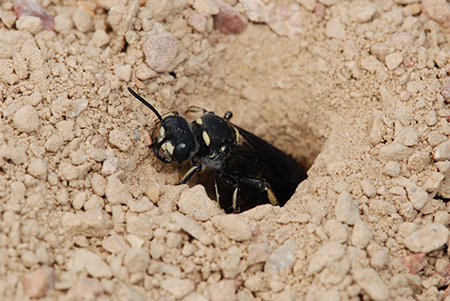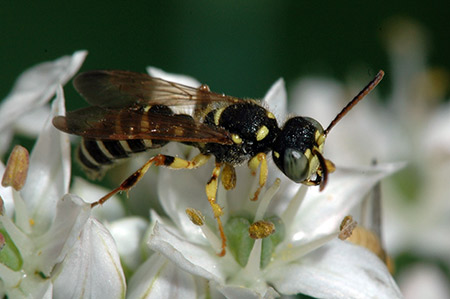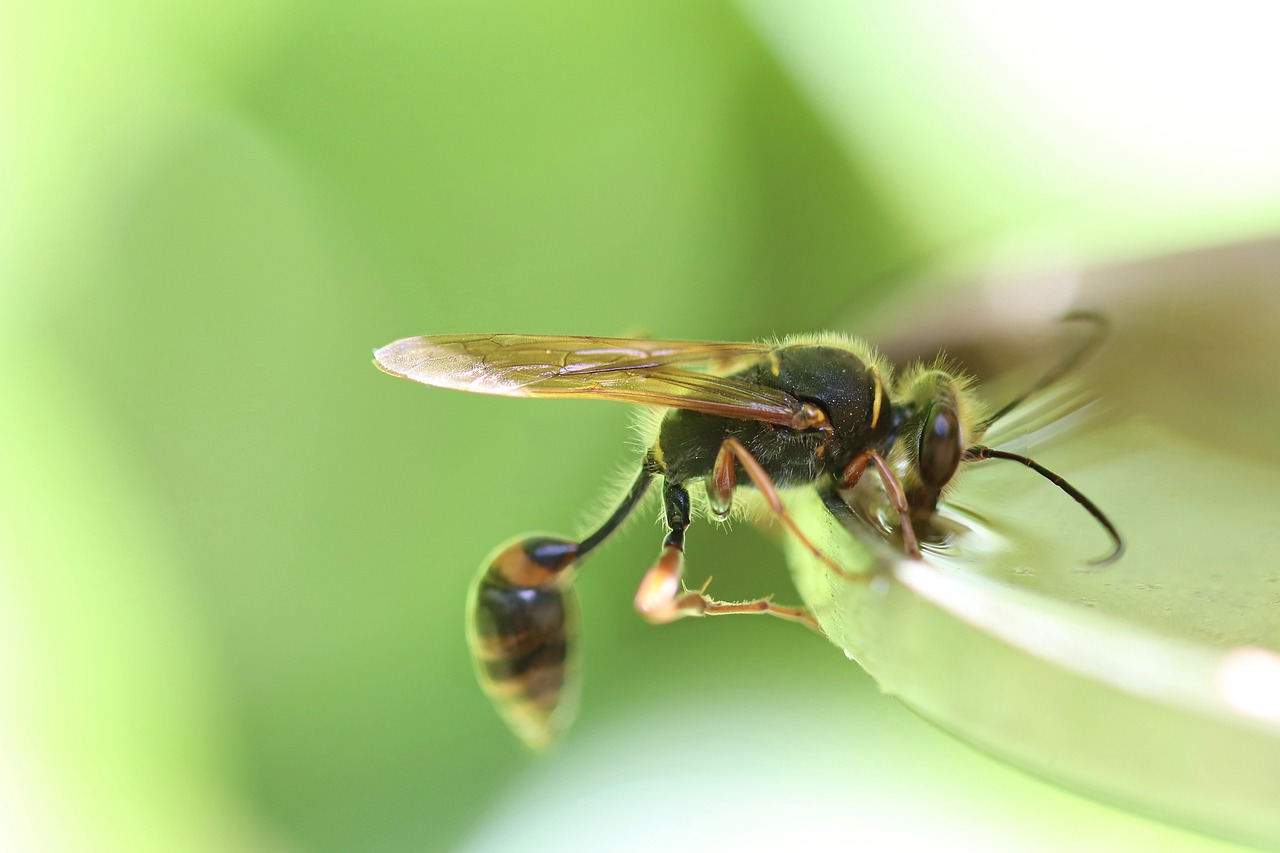When you hear the word “wasp,” you immediately think of an angry yellow flying insect that stings you. That would be a yellow jacket… In reality, there are many types of wasps. And many of them are not even harmful, such as the group of wasp species called solitary wasps. But what exactly are solitary wasps?
Solitary wasps fast facts
- There are many different kinds of solitary wasps. Solitary wasps are wasps that live mostly in their individual nests. This is contrary to, say, yellow jackets that live in huge numbers in a single nest to form a colony. Solitary wasps are also often confused with bees. But bees have hairy bodies and legs and you will often see them carrying pollen on their legs. Meanwhile, solitary wasps have very few hairs and they are not as effective as pollinators compared to their bee cousins. They are also mostly thread-waisted wasps and digger wasps. Thread-waisted wasps have a long and thin segment between their abdomen and thorax while digger wasps resemble yellow jackets but are more robust.
- They are not as pesky as other wasps. You don’t want yellow jackets around because they are aggressive. They can attack even if you are not a threat to them — more so if you are, like when you are trying to destroy their nest. But solitary wasps are different. They avoid people if they can. They don’t defend their nest. And they are not likely to sting unless you mishandle them. They can be nuisance pests though, especially when they start thriving too well outside your home.
- They are actually beneficial to have around. It can be beneficial to have wasps around. No, it’s not because of their ability to pollinate. It’s about their ability to control the population of common pests. Look at parasitic wasps, for instance. Gardeners let parasitic wasps thrive in their gardens to get rid of garden pests like tomato hornworms. Solitary wasps are also like that. They are predators of cicadas, crickets, spiders, and other small and annoying creatures in your garden, lawn, and yard.

Why they should not worry you
- Solitary wasps are not stinging hazards. Yellow jacket stings are dangerous. They are not just painful. They also put you at risk of anaphylaxis, also known as an extreme allergic reaction. This is a life-threatening condition. Solitary wasps can still sting, but at least they are not as aggressive as other wasps like yellow jackets. And they will only sting when they feel threatened and when they are defending themselves. These wasps will generally leave you alone if you leave them alone. There is no need to be extremely alarmed when you see solitary wasps around you.
- They don’t live very long. Solitary wasps live only for one season, so even if they become a nuisance around your property, they are not going to be there very long. They also don’t reuse their nests, which they often dig in the ground. The only “damage” this can cause to your home’s exterior is that holes are not aesthetically pleasing. You may also see them feeding on nectar in your garden, but this is natural and they are not doing any damage either. These nuisance pests can be gone as quickly as they have come.
- Pest control is not required. Generally speaking, solitary wasps are harmless insects. There is no need to use pest control to get rid of them. There isn’t even a need to get rid of them at all. Let them do their thing for one season and let them disappear on their own. With that said, there are times when solitary wasps can be too much of a nuisance, especially if you live with children, pets like cats and dogs, and elderly people. At the end of the day, they are still stinging pests.

How to control them when necessary
- Sprinkle insecticidal dust in their nest. If solitary wasps have become too much of a nuisance and you really want to get rid of them, insecticidal dust is the best option. This is because most solitary wasps live underground. They are like yellow jackets in this regard. Insecticidal dust will be more effective than liquid solutions. Thankfully, insecticidal dust is accessible. You can buy them in garden supply and pest control stores. Many of them use permethrin as their main ingredient.
- Remove the nest with a knife. Solitary wasps can be territorial. They can get into your face to discourage you from coming near them, but they won’t sting. But despite this nature, they actually don’t defend their nest. You can cut or scoop it up with a knife. Some solitary wasps also live in groups, so you may see multiple individual nests in a small area outside your home.
- Often “disturb” your home’s exterior. Here’s the thing about pests — they often stay in an area where they can feel peaceful, safe, and away from you. This is the reason why you often see rats in your attic and squirrels in your basement. What you can do is disturb your garden, lawn, and yard, so potential pests won’t feel peaceful and safe there. Keep it clean. Rake leaves consistently. Throw away debris. And pick up ripe fruits and vegetables. The more active you are outside, the less likely you are to experience a solitary wasp infestation.
Solitary wasps are beneficial insects
Solitary wasps are different kinds of wasps that are generally harmless. Sure, they can scare some people because they look similar to more dangerous wasps like hornets and yellow jackets. But they are actually beneficial insects. They are predators of common garden pests, and they leave humans alone. It’s just a perfect combination.
However, solitary wasps can still be nuisance pests. They can dig holes around your garden, making it aesthetically displeasing. They can nest in your child’s sandbox, putting your child at risk of getting in contact with wasps. And they can fly in your face to try to shoo you away. If using insecticides and removing their nests manually with a knife doesn’t work, consider getting help from pest control professionals.

